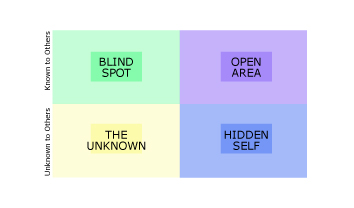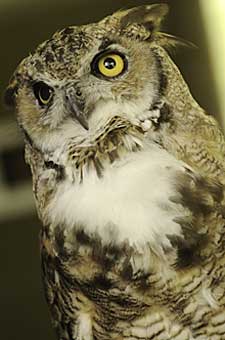Product Positioning Map | Strategic Planning
Many visitors have downloaded this form and I am thrilled that others find it useful. Feedback from your target audience is a crucial element when planning and implementing a holistic marketing strategy for your company. I prefer to provide a visually compelling/customized form when gathering information for clients. This exercise is simple to conduct and will provide actionable insights. You can download the generic form below from www.marketingholistics.com. It’s also a snap for me to provide a custom designed positioning template (PDF format). You can specify two value variables and four product variables.
Visit the Marketing Holistics websiteto download the generic PDFor shoot me a fast e-mail and I’ll customize it for your use.
Inspiring Creativity | Organizational Culture
This book review was an assignment for my recent MBA course on Organizational Change. The read/write was simply fun! People write books to put their thoughts and ideas into words. Books are made up of words and words are symbols. Books will be sold and authors will make money. People read books to be entertained, to relax and to learn. Not every book is well written and informative. Books populate our university libraries, decorate our coffee tables, line our bookshelves, and others stack up on our night tables. Some books end up in the front of a bookstore bargain rack and some books end up in the Good Will Bin. Some books will make the digital path onto our e readers. People read books for many reasons and people write books for many reasons. A book about the creative process of innovation is a rare treat. The Art of Innovation: Lessons in Creativity from IDEO, America’s Leading Design Firm, written by Tom Kelley, provides a blueprint for managers who must innovate to survive. Kelley is the general manger of IDEO, a company that is recognized as a leader in innovative design. He positions himself as an expert in the field, convices clients to use their methods and inspires us to think out-of-the box.
Michaelangelo, Van Gogh, Brams, and Bob Dylan did not write books about their work while Martha Stewart just keeps publishing. Once our society achieved industrial maturity, we found time to be creative and not just survive. Perhaps we gained insight from a letter or a biography. Although innovation is far from a commodity, design thinking to fuel innovation is within everyone’s grasp. The folks at IDEO survive to create.
1. INNOVATION AT THE TOP: According to Kelley, Innovation was not always a Silicon Valley “hot topic.” Companies outsourced product development for four reasons: raw capacity, speed, expertise and innovation. Kelley contends that innovation is now at the top of this list. He attributes a blend of methodologies, work practices, culture and infrastructure as the formula that has worked for IDEO. This mix includes understanding the market, observing real people, visualizing, evaluating and refining, and implementing to bring order to apparent creative chaos.
2. WINGING IT IN START-UP MODE: a very short synopsis of who and when.
3. INNOVATION BEGINS WITH AN EYE: “If you are not in the jungle, you are not going to know the tiger” and the importance of “focused observation”, “listening to kids”, “learning from people who break the rules”, and “seeing things as verbs.”
4. THE PERFECT BRAINSTORM: “Brainstorming is the idea engine of Ideo Culture” and the seven secrets for better brainstorming include: sharpen the focus, playful rules, number your ideas, build and jump, the space remembers, stretch your mental muscle, and get physical. If you want to kill a brainstorm: the boss gets to speak first, everybody gets a turn, experts only, do it off-site, no silly stuff, and write down everything.
5. A COOL COMPANY NEEDS HOT GROUPS: get the right people, empower teams with the help of “crazy deadlines” and “seemingly unreachable goals.” Characters for hot groups include: the troubleshooter, iconoclast, pulse taker craftsman, technologist, entrepreneur and the cross-dresser.
6. PROTOTYPING IS THE SHORTHAND OF INNOVATION: prototyping is iterative problem solving, a culture and a language and better than pictures. Kelley tells a fascinating story about how Amazon’s Jeff Bezos urgently forged his way from Wall Street to Silicon Valley.
7. BUILD YOUR GREENHOUSE: tear down the walls, don’t take the space seriously, and keep an eye on the body language of your company and have a story-telling entrance.
8. EXPECT THE UNEXPECTED: subscribe and surf, play director, hold an open house, inspire advocates, hire outsides, change hats, and cross train to cross pollinate.
9. BARRIER JUMPING: don’t skate over cultural differences and understand market adoption.
10. CREATING EXPERIENCES FOR FUN AND PROFIT: new uses for what exists.
11. ZERO TO SIXTY: speed counts.
12. COLORING OUTSIDE THE LINES: rules are bureaucratic.
13. IN SEARCH OF THE “WET NAP INTERFACE”: keep it simple and fight feature creep.
14. LIVE THE FUTURE: don’t imitate competitors and use visual prototyping.
15. GETTING IN THE SWING: watch, play, think verbs, break rules, be human, and build bridges.
Breaking down Kelley’s book chapter by chapter was extremely helpful for me because I now have a “must do guideline” that I can use to introduce, present, inform, motivate, and hopefully lead change which is inspired by innovation. In our class we are using The Heart of Change: Real-Life Stories of How People Change Their Organizations. I’ll post some insights on this great volume shortly. When I first read Kotter’s Eight Steps I actually thought, “How disappointingly linear” and found the stories not particularly relevant and not specific. Now, however, I appreciate the brilliance of Kotter’s structure because I have come to realize that taking steps is ingrained behavior and hard-wired from an evolutionary perspective. I once worked with a manager who kept saying “we need to take little bites out of the elephant” but failed to realize that “she was the elephant” and that she needed to take “little steps” and “lead by example.” Steps can be an efficient way to get to the next level. I like how Kelley uses the metaphor of an escalator (moving steps) as a more efficient and effective corporate transport method. Kotter’s steps: Increase Urgency, Build the Guiding Team, Get the Vision Right, Communicate for Buy-In, Empower Action, Create Short-Term Wins, Don’t Let Up, and Make Change Stick (Kotter, 2002) are very organized and direct and his book, more than coincidentally was published the year of Kelley’s. The approaches are similar: lists, steps, and stories although Kelley focuses on innovation and Kotter focuses on change and the two are not identical. Change Management is a broad concept which has strategic implications for an organization and can be achieved using various models and techniques. Innovation is a proactive response to an environmental condition and is becomes part of a change strategy.
IDEO is an acclaimed and fascinating company. The first five chapters were extremely valuable because David Kelley provides lots of lists and steps which articulate the essence of innovation with particular regard to design. His stories are very interesting and inspiring. How many people actually know that Jeff Bezos of Amazon drove across America and made desks from doors? I believe in the power of story telling to move and inspire people and it is important for the story to have a purpose.
Opening each chapter with a color photo seemed compelling. For example, the photo of the elephant and the mouse which opens Chapter 8 was technically and metaphorically perfect. I think it is very hard for a book which focuses extensively on innovation to remain relevant when the pace of innovation is accelerated from sheer necessity because of the maturity of capitalism and consumer wants and tastes. This book accomplishes just that. The chapters in the first half of this book show us the what, the why and the how. Kelley provides actionable insights in a simple, straightforward manner. The who is probably more important for those who cannot imagine easily and need concrete examples for inspiration and guidance because people need real stories to inspire them.
Kelley’s book stimulated me in additional ways. I went online and visited Ideo’s brilliantly designed, user friendly website: www.ideo.com. I downloaded their company fact sheet, a well designed and informative one-page PDF. Ideo’s client page visually showcased the projects for over twenty companies. This compelling screen was followed by an alphabetized industry list which expanded to impressive client lists. I visited their very professional video channel: http://vimeo.com/channels/ideo. The c60 Redux Music Player is nothing short of brilliant because it looks like a traditional vinyl record turntable and puts physicality back into playing music while providing the component of digital mix. I shopped at the Apple App Store on my iphone, found great games for kids designed by Ideo, and downloaded Ideo’s Free Deck of Design Cards onto my phone. I listened to Ideo’s CEO, Tim Brown urge designers to think big at TEDGlobal 2009. The digital delivery of their message is consistently compelling, brilliant, entertaining, inspiring and visually rich. Kelley’s book, The Art of Innovation simply put me on a new path. The moment I finish this report, I will start reading Tim Brown’s book, Change by Design. I operated a successful floral design company for fifteen years in New Haven, Connecticut, am a published photographer and an award winning graphic designer. My urge to create comes from within and started at an early age. I enjoy helping people and relish the opportunities when my energy and vision inspire them to think in new ways.
_________________________________________________________________________
Citations
Kelly, T. (2001) The Art of Innovation: Lessons in Creativity from IDEO, America’s Leading Design Firm. New York: Doubleday.
Kotter, J. P., & Cohen, D. S. (2002). The Heart of Change: Real-Life Stories of How People Change Their Organizations. Boston: Harvard Business School Publishing.
QR codes for Mobile marketing
 A colleague, Jackie Hotton, showed me how easy it was to generate a QR code by visiting:
A colleague, Jackie Hotton, showed me how easy it was to generate a QR code by visiting:
http://qrcode.kaywa.com
and then you have to link the image file to the url code kaywa generates and viola, anyone with a smart phone that has a QR reader can access your information.
I will be writing about mobile marketing in the very near future. Stay tuned!
Word Press powers 10% of web sites | that’s a big number…
http://sixrevisions.com/wordpress/fine-tuning-wordpress-seo/#more-5251
marketing 3.0
Philip Kotler coined the term Holistic Marketing in his seminal text, Marketing Management and I consider this work a bible.
Kotler’s new work, marketing 3.0, defines a break with traditional marketing models and shifts the focus to values driven methods.
Simply put this book is a fast/must read.
Anda Styler | Magnificent Landscape Artist | River Road Gallery Wilton CT
I found the work of an exceptional artist, Anda Styler, at the River Road Gallery in Wilton Ct. River Road just announced their Holiday Season art show, “Light and Shadow Play” which features the art of Anda Styler. The show opens with a preview on Friday, Dec. 3rd from 5 – 8 p.m. The artist reception is Saturday, Dec. 4th from 5 – 8 p.m. Styler’s landscapes highlight New England’s homes and barns with their gardens, wild or cultivated. Anda finds inspiration right in her backyard.
Anda is a graduate of Western Connecticut State University and Parson’s School of Design.
River Road Gallery features new work by Anda Styler in “Light and Shadow Play” which will run through January 8, 2011. Visit their blog for more information: www.riverroadgallerywilton.wordpress.com.
River Road Gallery is located at 21 River Road in Wilton Center, next to Starbucks. Open Monday through Saturday 10 am to 6 pm.
The Johari Model of self-awareness | Holistic Marketing
SELF AWARENESS means knowing about one’s idealized self in terms of aspirations as well as a sense of your presence at present. A component of self-awareness is knowing how one is perceived by others.  The Johari Model is a graphic model developed in the 1950’s which aids in the interpretation of self-awareness. This exercises involves psychological communication and the diagram is fairly self-explanatory.
The Johari Model is a graphic model developed in the 1950’s which aids in the interpretation of self-awareness. This exercises involves psychological communication and the diagram is fairly self-explanatory.
What’s involved:
- Apply a list of words to yourself.
- Have others apply the same list to you.
- Note the similarities
- Note the differences.
- Act on the insights
Do I have the courage to take a test in my blog? My personality is warm, upbeat, artistic, curious and engaging. I am interested in the arts particularly photography and design. I also like the politics of the Civil Rights Movement. I prefer to be generous but have tamed down that impulse over the years. I am happily married to a smart, kind, successful gentleman. We have two dogs and no children. I know “team dynamics” are a crucial business skill to develop. I am interested in marketing and working with small entrepreneurial businesses permits me the latitude to leverage my core communication skills.
I am also obsessed with learning new skills and improving existing ones. Right now I am reading four books:
- Web Analytics 2.o new by Avinash Kaushik [he was an author@Google – and donates the proceedes from his two book to charity]
- The Art of SEO by Enge Spencer, Fishkin and Stricchiola [fuzzy logic and semantic intent]
- Eyetracking Web Usability by Nielsen & Pernice [heat maps & gaze plots]
- Search Engine Optimization for Dummies by Clay & Esparza [anyone can do a redirect]
and have at least eight more piled on my night table.
The need to learn traces back to my childhood because my parents rewarded me for being a good student. Their praise and approval motivated me to constantly strive for “very good grades.” Now I learn for the pure sake of love of learning. Coworkers think that I have a high energy level and am focused and determined. Sometimes I am a tad impatient but always find time to help others. The good news is that it is never too late to improve and learn new things. My husband thinks that I am focused, motivated and smart but he also thinks that I sometimes allow myself to get a bit sidetracked by unimportant details and people with difficult personalities. He is 100% correct. I consider myself extremely responsive.
Shifting gears and seeing connections: Carl Jung identified four psychological archetypes: thinking, feeling, sensing and intuition. Understanding how other people relate has always helped me to create compelling visual communication. SWOT analysis, a classical marketing exercise involves determining an organizations internal strengths and weaknesses as well as external opportunities and threats. Holisitic Marketing also has four components: Relationship marketing, integrated marketing, internal marketing, & performance marketing. A Product Positioning Map also has four quadrants:At this point I am wondering why the above tests, models, models and maps all have four components and if there is something about the underlying structure of four components that becomes visually and literally compelling?
Getting Back to Chihuahuas…
Susan Payne breeds, handles and judges Chihuahuas. Her book, The Chihuahua, was just published by Kennel Club Classics. I finished reading her book from cover to cover. The section on the history of the breed is very interesting and my favorite part. In Mexico dogs were believed to accompany souls to heaven. The Chihuahua has tremendous “star quality.” Every Chihuahua has a story. Susan Payne emphasizes the importance of finding a breeder that breeds to the standard which is crucial for the health of the dog.
In 2006, my husband and I had visited the Springfield, MA, Dog Show the previous winter. We were interested in finding a Bassett Hound . We are very partial to these hounds. We spotted a little girl named Edith who ate rocks and another fine guy named Grissom. We were just not ready at that time. The following year we rescued Seamus, who is the most perfect and handsomest dog in the entire world. Seamus has taken over our plush rocker/recliner- a birthday present for my husband. Seamus has a sister, Holly  who is
who is  also a “rescue hound.” These guys are spoiled. They get scrambled eggs for breakfast on Sunday and have a beautiful dog bed from ORVIS that is big enough and comfortable enough for me to spend the night with them although I typically do not do so. However, I brush their teeth almost every day. Get the picture!!! Seamus even has his own blog and frankly, the ladies swoon over him. As you can see, the rescue league ad for Holly, claiming that she was “the best of breed” may have been an exaggeration but the part about “her sweetness” was right on.
also a “rescue hound.” These guys are spoiled. They get scrambled eggs for breakfast on Sunday and have a beautiful dog bed from ORVIS that is big enough and comfortable enough for me to spend the night with them although I typically do not do so. However, I brush their teeth almost every day. Get the picture!!! Seamus even has his own blog and frankly, the ladies swoon over him. As you can see, the rescue league ad for Holly, claiming that she was “the best of breed” may have been an exaggeration but the part about “her sweetness” was right on.
Well it is definitely time to switch gears and get back to Chihuahuas!
A colleague of my husband, Steve, was at the 2006 Springfield show with her tiny Chihuahua. I took a few pictures of Sue Pease and her pet and sent her a few prints. Several months later, Sue Pease’s friend, Chihuahua breeder, Susan Payne, asked my permission to use a few of my photos in a book she was writing for Kennel Club Classics. That’s how I met Susan Payne in the Spring of 2007 when I took some photos for the book she was authoring about Chihuahuas.
 Of course, I was thrilled at this opportunity and took more photos for Susan Payne over the next few days. During the process I learned more about this charming breed. Susan’s interesting and informative book, The Chihuahua, is now available at Amazon and Barnes & Noble. The cover of the book is shown at the left. Sue Pease also happens to be a contributor to this fine book. Photographing pets for personal pleasure is very different than photographing dogs to document the characteristics of a particular breed. Breed standards are very important. The Chihuahua has a section on animal care which provides so much valuable information. I just learned that there is a small space where plates join in their skulls and I imagine this spot is vulnerable.
Of course, I was thrilled at this opportunity and took more photos for Susan Payne over the next few days. During the process I learned more about this charming breed. Susan’s interesting and informative book, The Chihuahua, is now available at Amazon and Barnes & Noble. The cover of the book is shown at the left. Sue Pease also happens to be a contributor to this fine book. Photographing pets for personal pleasure is very different than photographing dogs to document the characteristics of a particular breed. Breed standards are very important. The Chihuahua has a section on animal care which provides so much valuable information. I just learned that there is a small space where plates join in their skulls and I imagine this spot is vulnerable.
I prefer to take pictures. Writing a blog post is quite a task for me but practice makes perfect. I admire people who are prolific/adept writers and realize that the process is not as easy as the final product might make it seem.
I’ve included my favorite photo from this project in my post. I also really love the photo of Broadway dog trainer, Bill Berloni, who looks like he has his hands quite full. Of course, you will have to read this book to find out why. Perhaps you will discover why this tiny little creature is so popular and adored by millions of people around the world. All the Chihuahuas that I have met are smart, confident and well-behaved and to be perfectly honest I don’t think I can say that about all the bassett hounds I’ve met.
Gardenias | my favorite fragrant flowers
Flowers make me happy. I love photographing flowers…white flowers are more challenging. Photoshop CS4 has introduced the adjustments panel which makes granular edits a snap.
Many white flowers are particularly fragrant. Freesia, lily of the valley, tuber roses, honeysuckle, lilac, roses, casablanca lilies, peonies, hyacinths, jasmine and magnolia all have a heavenly aroma.
White flower facts:
The White Flower Farm in Litchfield, CT was originally founded by a NY Times reporter. At first, he bred only white flowers. The strains were hard to maintain, though, and colors crept in.
The JFK library is Boston, MA has a beautiful planting of rambling roses and pines reminiscent of the Cape Code seashore. Over the years, pink roses have appeared because the white strain orignally planted is impossible to maintain intact in nature.
Shakespeare’s works are planted with multiple references to flowers.
Antheriums, orchids, amaryllis, and cala lilies are beautiful and a pleasure to photograph but not so fragrant.
-
Archives
- August 2011 (1)
- May 2011 (1)
- April 2011 (1)
- December 2010 (1)
- November 2010 (1)
- December 2009 (3)
- August 2009 (3)
- July 2009 (2)
- June 2009 (2)
- May 2009 (1)
- April 2009 (1)
- March 2009 (1)
-
Categories
-
RSS
Entries RSS
Comments RSS






